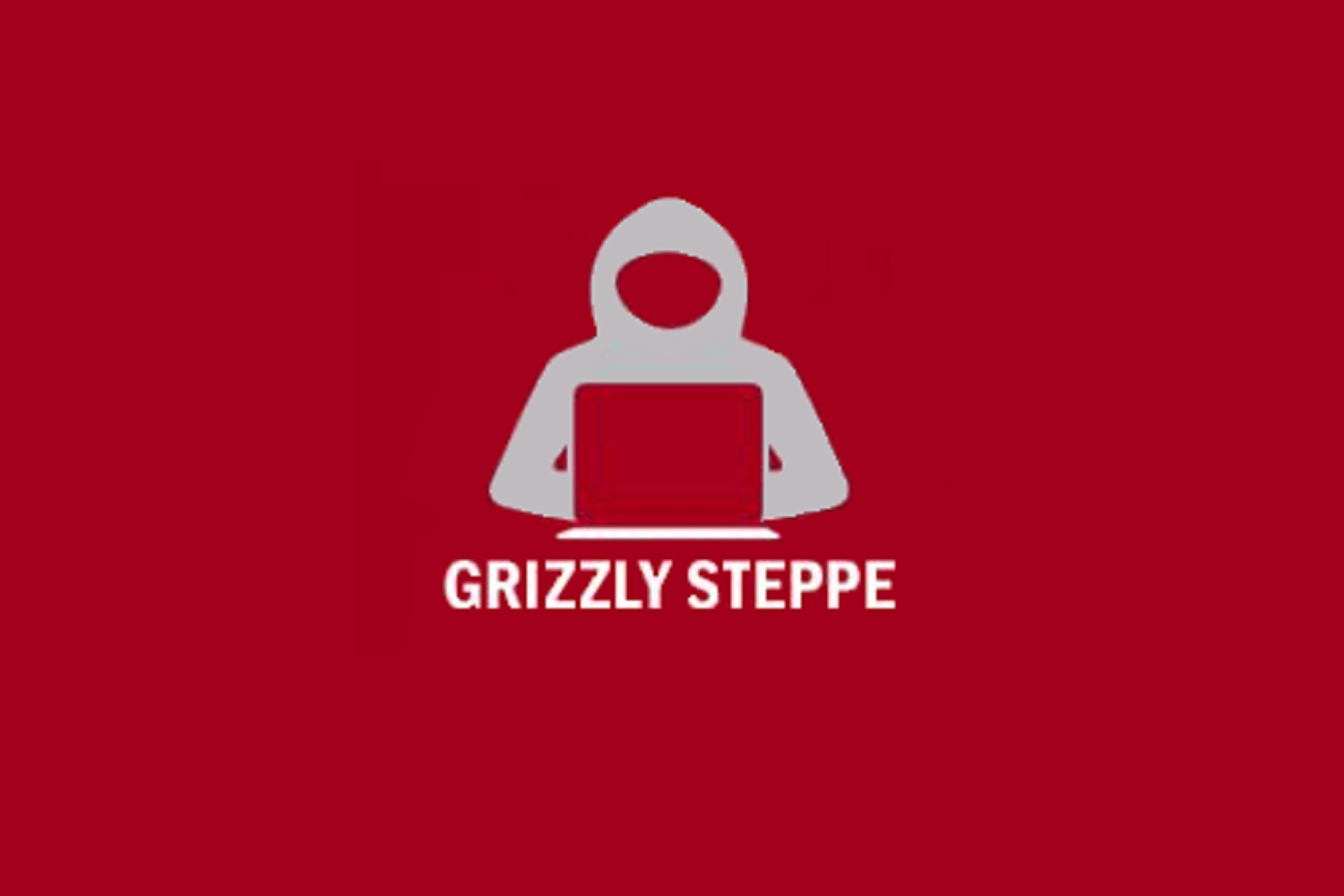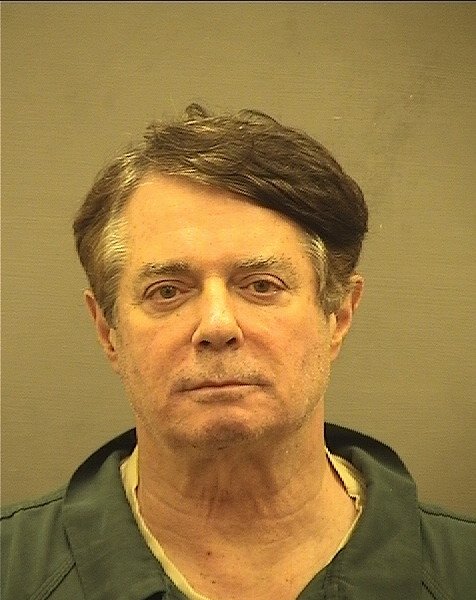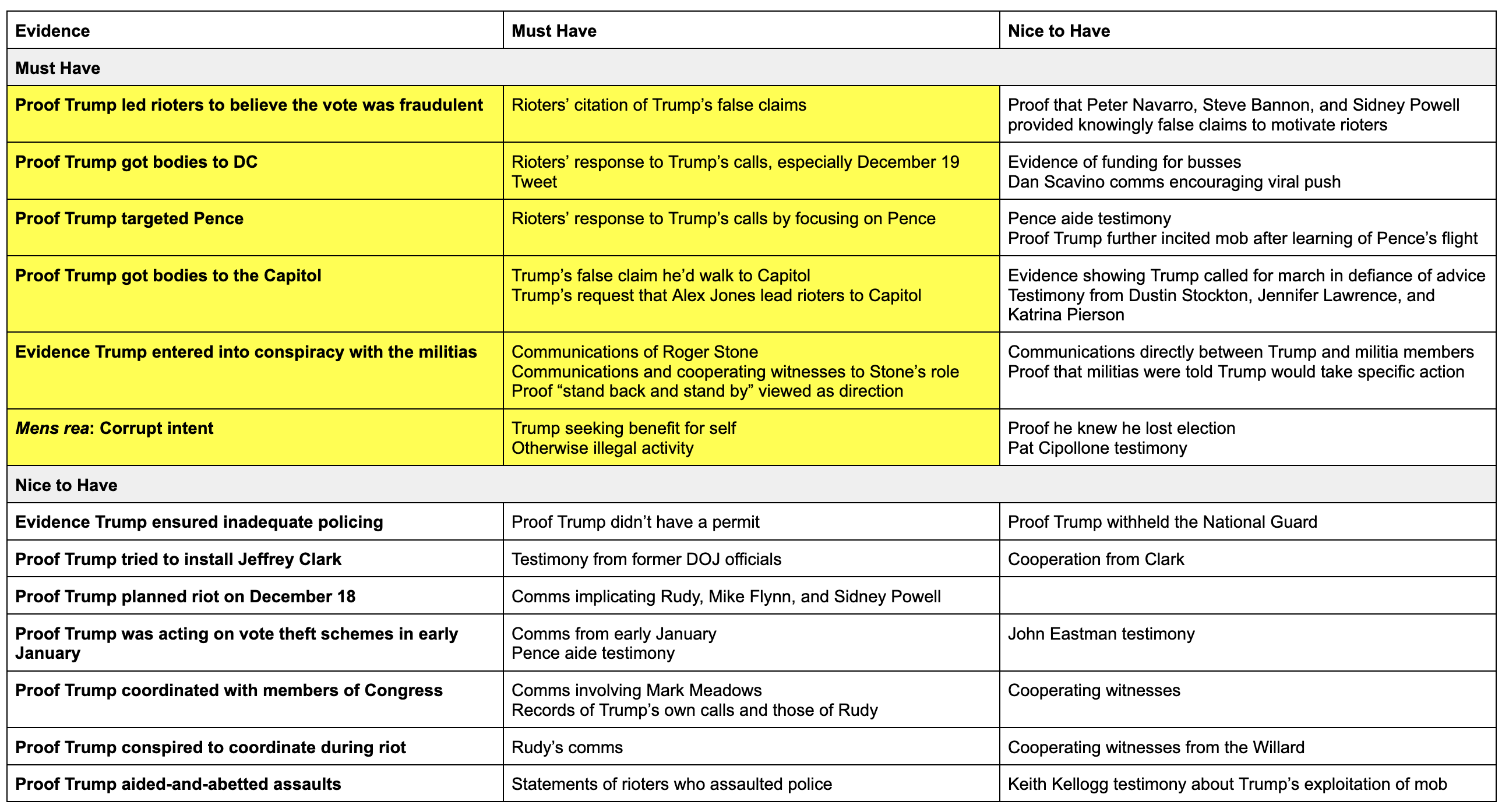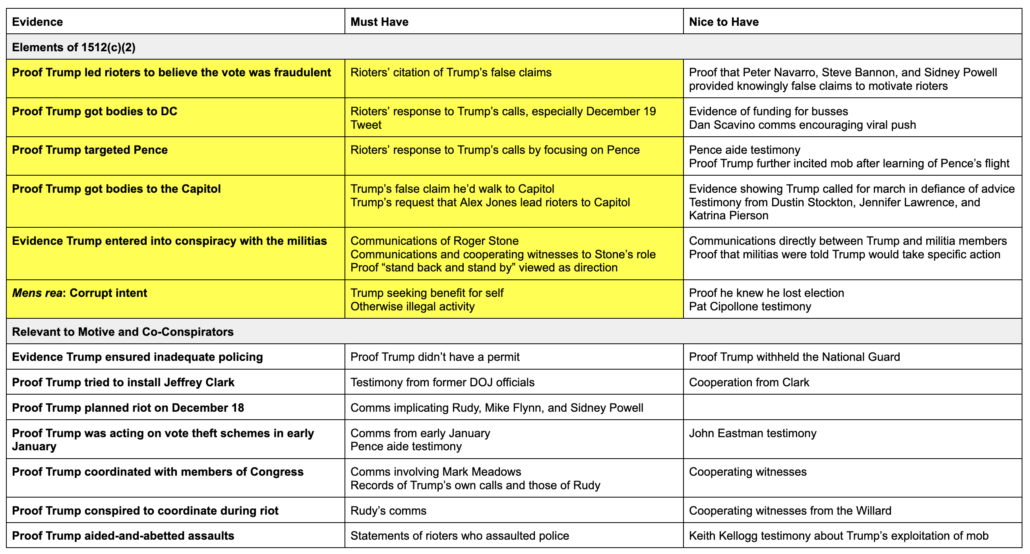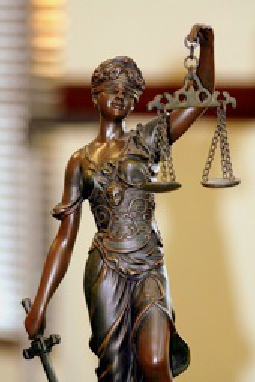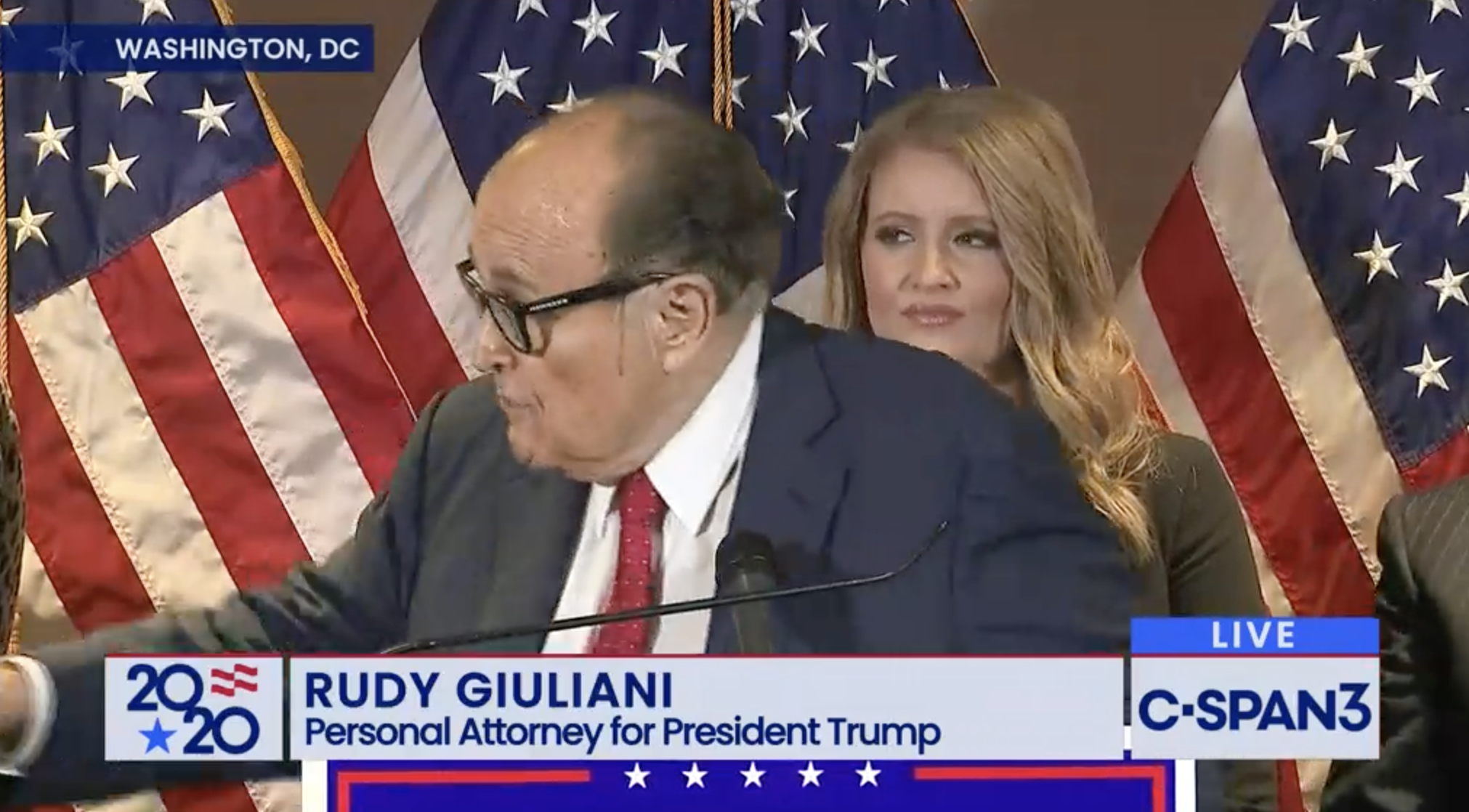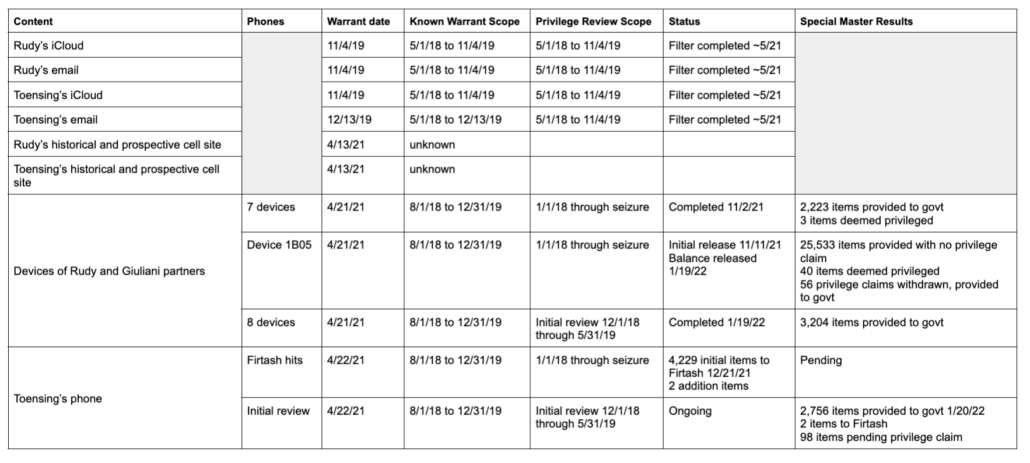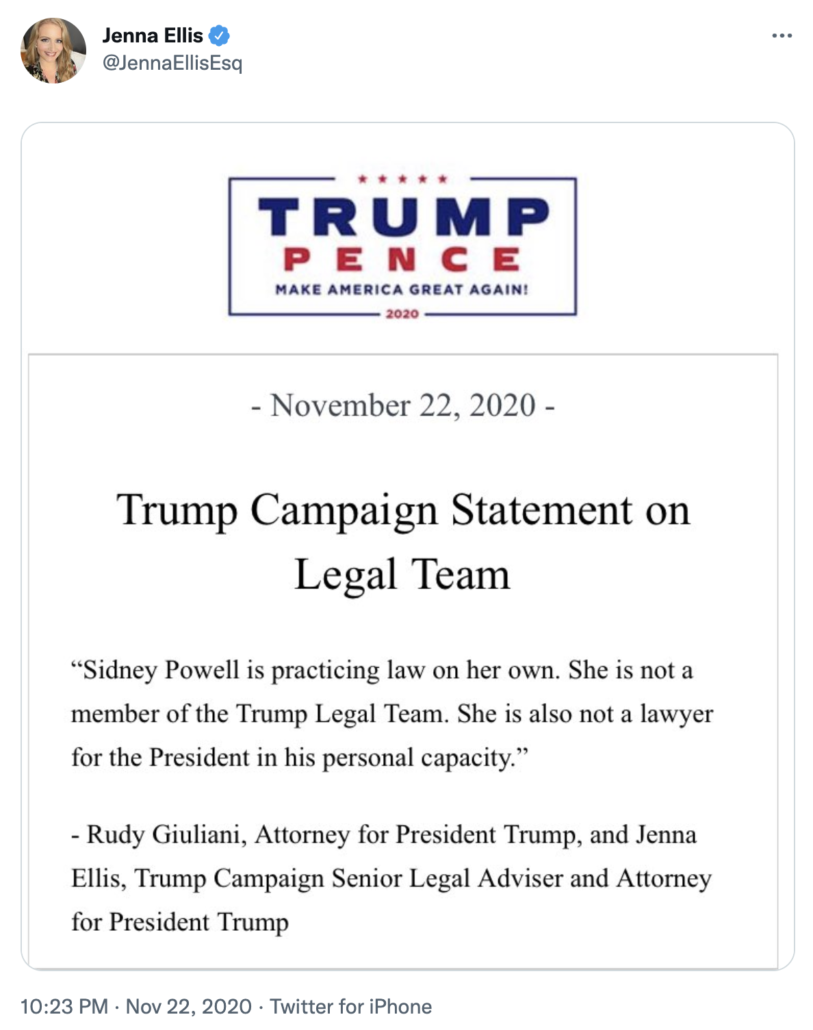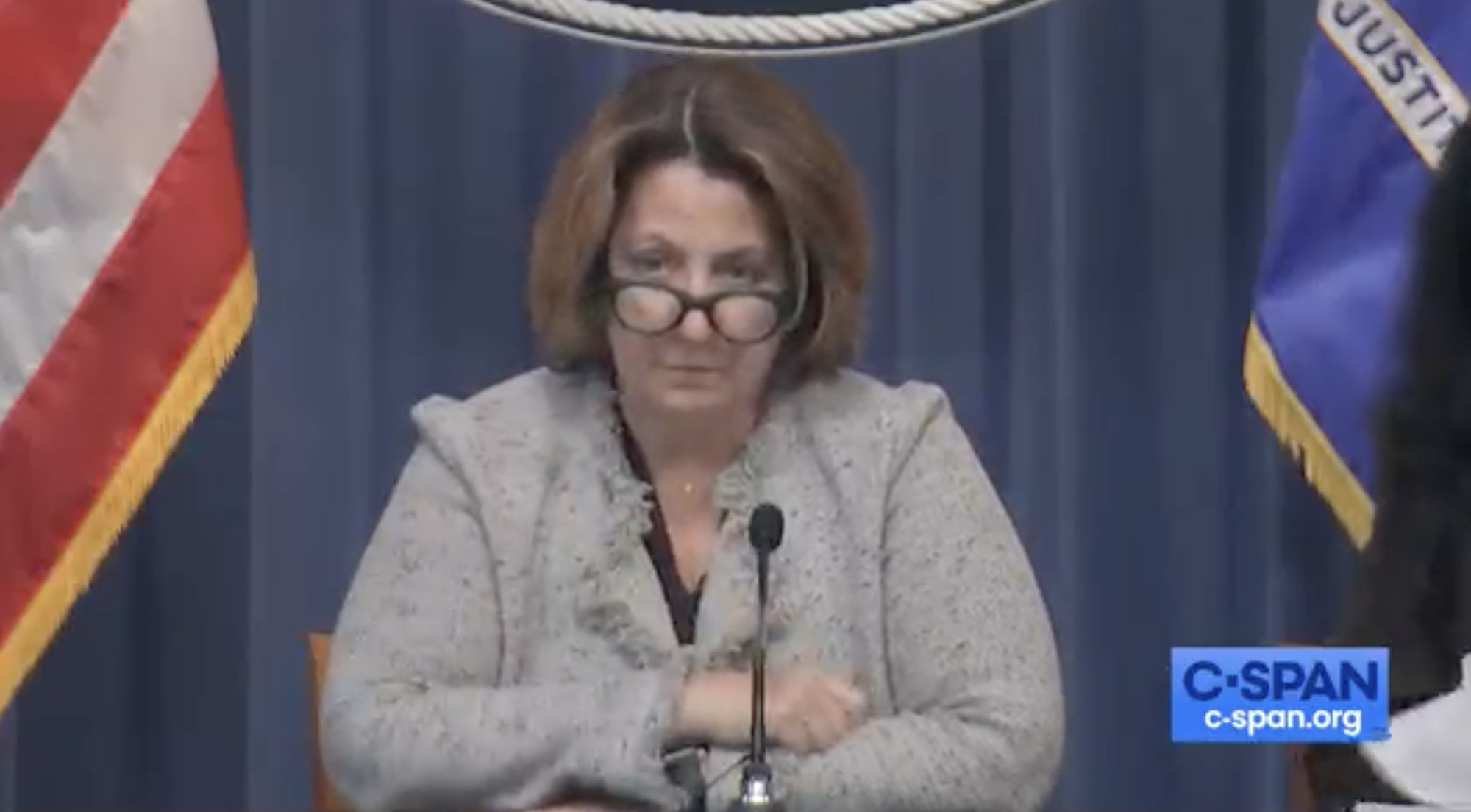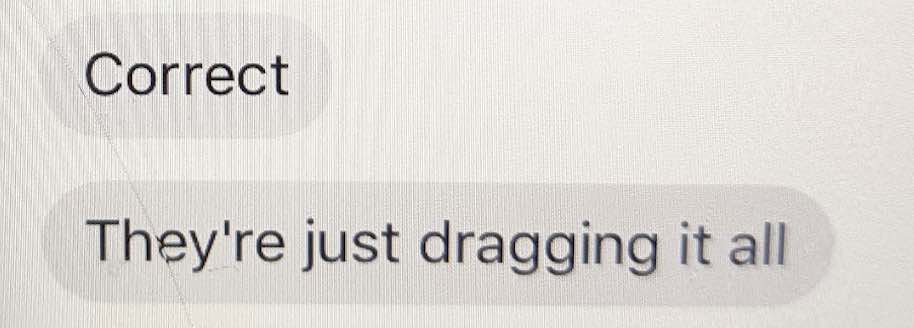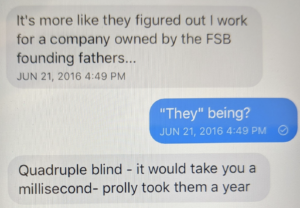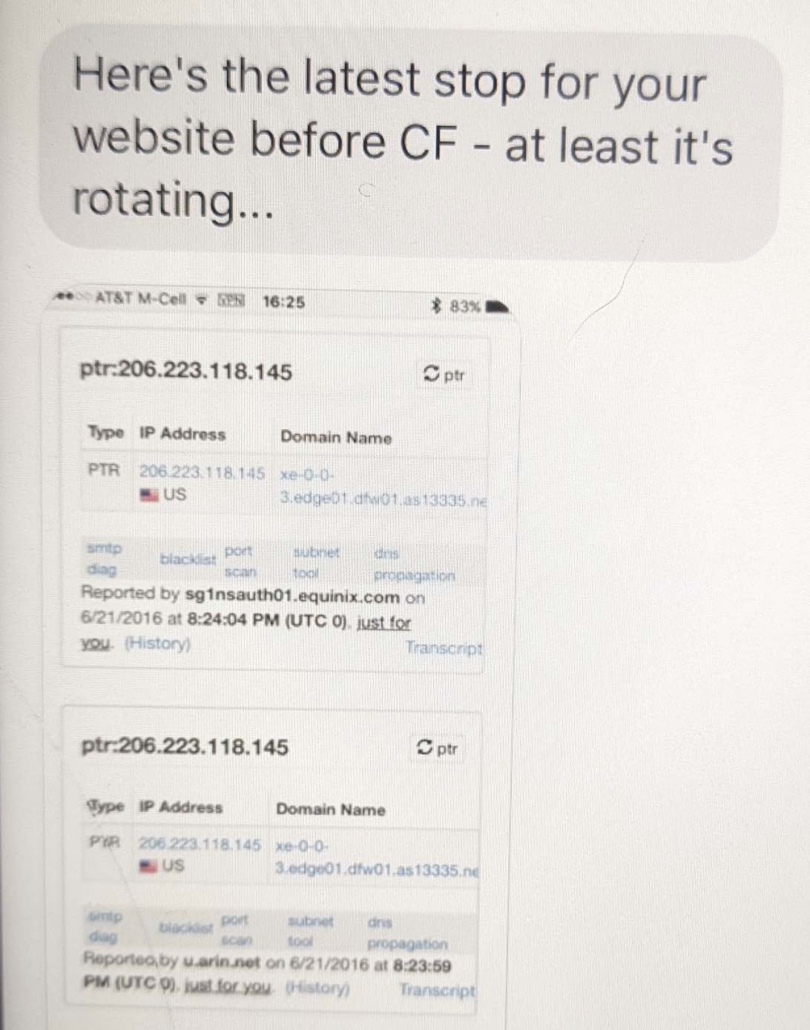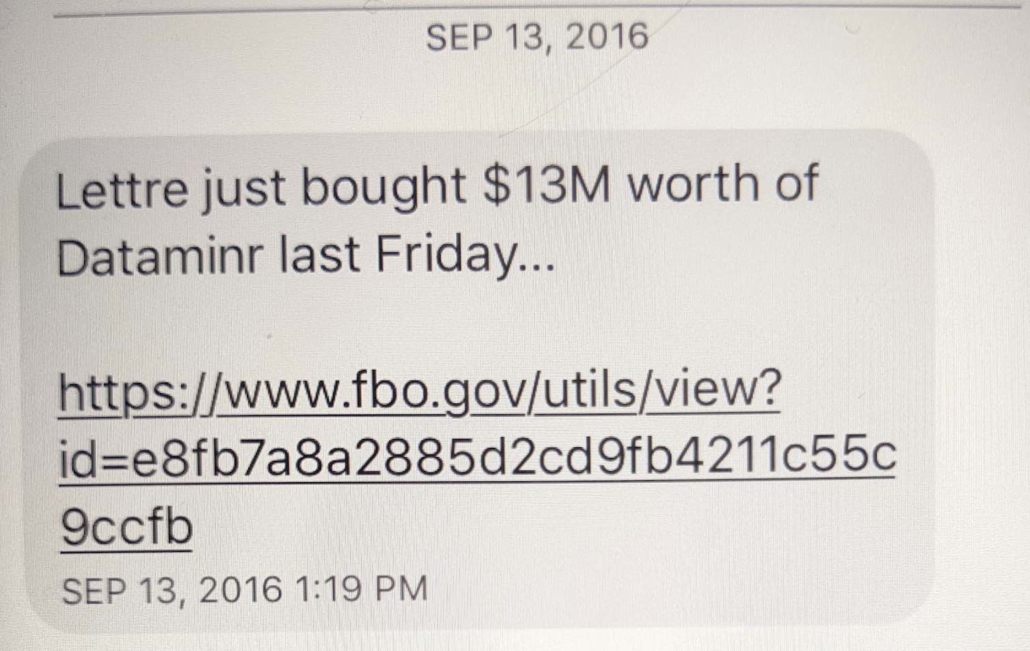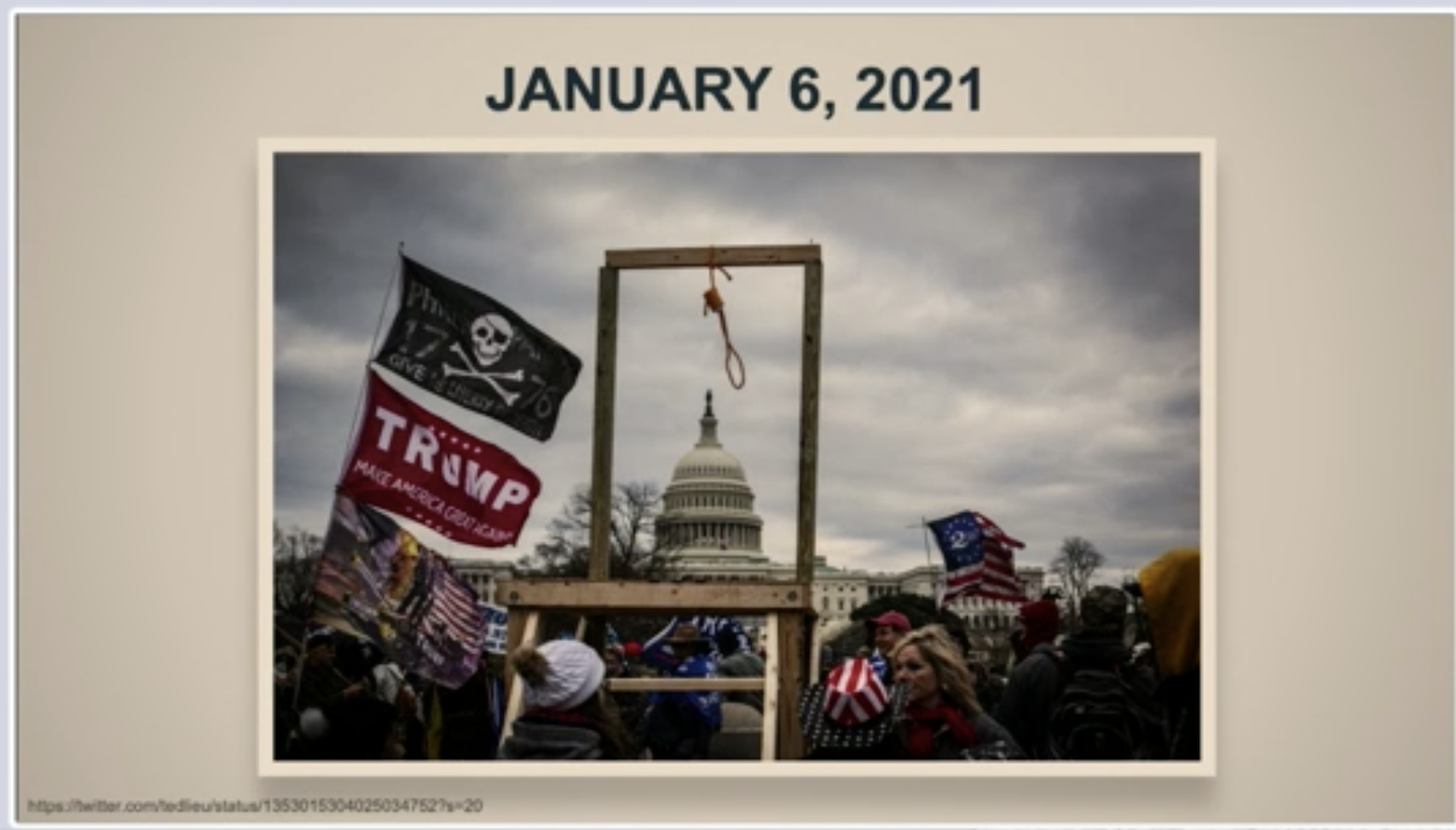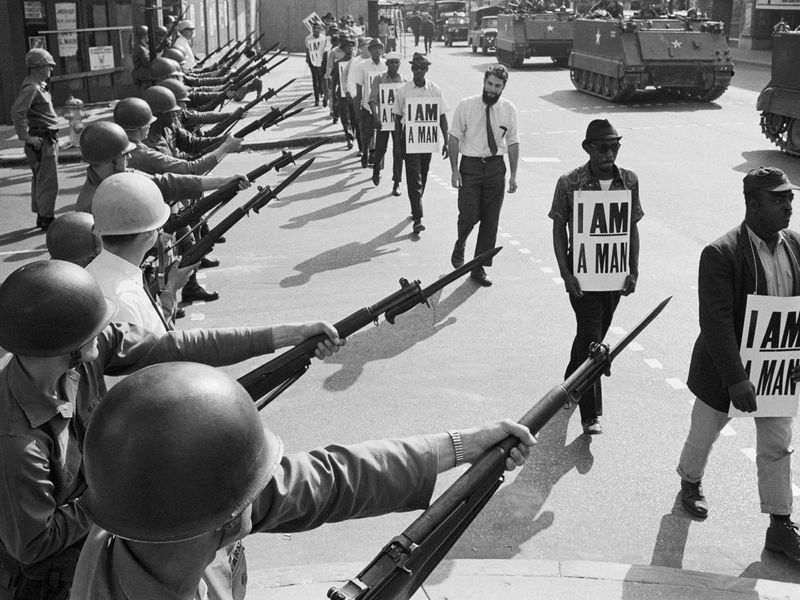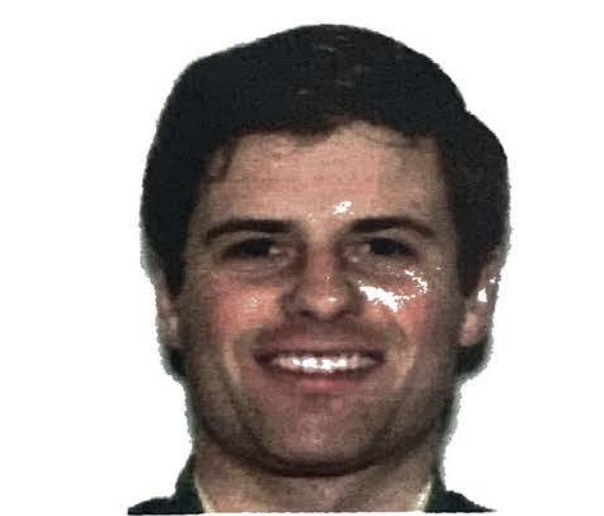John Durham Unveils His Post-Putin Puppet Strategy
I first complained publicly about the Alfa Bank allegations on November 1, 2016. I raised questions about the provenance of the Steele dossier the day after it was released, on January 11, 2017. I started raising concerns that Russia had succeeded in injecting the dossier with disinformation just a year later — literally years before the Republicans investigating it full-time did. When Democrats revealed that they had paid for the dossier in October 2017, I wrote a very long post labeling the entire project “fucking stupid.” Part of that was about the Democrats’ delayed admission they were behind the dossier. But part of that was because of the way the dossier distracted from Trump’s very real very concerning ties to Russia.
It has been clear for some time that Steele’s reports had some kind of feedback loop, responding to information the Democrats got. That was most obvious with respect to the September 14 Alfa Bank report, which was obviously written after first news of the Alfa Bank/Trump Tower story, which was pushed by Democratic partisans. Particularly given that we know the released report is a selective release of just some reports from the dossier, the inclusion of Alfa Bank in that release makes no sense. Even if reports about old corrupt ties between Alfa and Putin are true (as if Democratic politicians and corrupt American banks never have old ties), the inclusion of the Alfa report in the dossier on Trump made zero sense.
Which is why Alfa Bank decided — after consulting with big Republican lawyers like Viet Dinh and soon-to-be DOJ Criminal Division Chief Brian Benczkowski — to sue for defamation. Now I understand why (particularly given that Republicans seem to have known who paid for the dossier for some time). I’m not sure Alfa Bank executives pass the bar for defamation here (though the publication of a report that misspelled Alfa’s name is pretty damning), but the fact that Elias paid for this dossier on behalf of the Democrats is going to make that defamation case far more explosive (and I’ll be surprised if Elias doesn’t get added into the mix).
As I said when I began this: I have no doubt Russia tampered with the election, and if the full truth comes out I think it will be more damning than people now imagine.
But the Democrats have really really really fucked things up with their failures to maintain better ethical distance between the candidate and the dossier, and between the party and the FBI sharing. They’ve made things worse by waiting so long to reveal this, rather that pitching it as normal sleazy political oppo research a year ago.
The case of Russian preference for Trump is solid. The evidence his top aides were happy to serve as Russian agents is strong.
But rather than let FBI make the case for that, Democrats instead tried to make their own case, and they did in such a way as to make the very solid case against Trump dependent on their defense of the dosser, rather than on better backed claims released since then.
Boy it seems sadly familiar, Democrats committing own goals like this. And all that’s before where the lawfare on this dossier is going to go.
I may be the earliest and most prescient critic of all this, in either party. Sit down, Kash Patel! Sit down, Chuck Ross!
Sit down, John Durham!
And boy was I right, way back in October 2017, about where this was going to go.
But I have also shown that people close to Oleg Deripaska succeeded in exploiting this project as part of a vicious double game, victimizing both Hillary Clinton and Paul Manafort, making it more likely Manafort would cooperate in the Russian operation against Hillary, which he did. I have shown that the most obvious disinformation in the dossier, probably sourced to Dmitri Peskov — claiming that Michael Cohen had secret communications with the Kremlin on election interference — served to hide Michael Cohen’s very real secret communications with Peskov on a Trump Tower deal involving sanctioned banks and a former GRU official. I have more recently confirmed that someone who claimed to work for an FSB front was pushing the Alfa Bank allegations more aggressively than Michael Sussmann in October 2016; that same person was using Internet routing records to support a false story in May 2016, the same month the DNS anomalies started. I showed that large numbers of Republicans rationalize their attack on democracy on January 6 based on the dossier, even while they accept the dossier was Russian disinformation, thereby literally claiming that Russian disinformation convinced them to attack American democracy.
And Russia’s wild success at using this to sow division continues, even as Russia massacres children in an assault on Ukrainian democracy. Just Monday, after all, John Durham suggested that because private citizen April Lorenzen investigated the actions of the people married to Alfa Bank Oligarch children, she was part of a criminal conspiracy, even though it is a provable fact that the man married to the daughter of an Alfa Bank founder, Alex Van der Zwaan, was — in those very same weeks!!! — acting on orders from Russian spy Konstantin Kilimnik to cover up Manafort’s ties to the Oligarchs behind the 2016 election interference. Durham is so far down his conspiratorial rabbit hole, he doesn’t even realize he’s trying to criminalize being right about a real threat to democracy.
Which brings us to Durham’s motion to compel submitted last night, predictably asking Judge Christopher Cooper to review the privilege claims behind the Democrats and Fusion GPS’ privilege claims. I’m pretty sympathetic that some of the privilege claims the parties involved have made are bullshit, just as the claims Trump’s supporters have made to hide the events that led up to January 6 or any number of other things that go well beyond election-year rat-fucking are obviously bullshit. But it now seems clear that Durham is making the same error Alfa Bank did, not only assuming that everyone pushing the Alfa Bank allegations was being directed by the Democrats (when Lorenzen played a more important role), but also assuming people working for Hillary were behind all new push on the story; I’ve proven that was false.
Worse still, the specific form of Durham’s demand and its timing not only prove Durham’s bad faith, but strongly suggest that Durham viewed his own investigation to form part of a symbiotic whole with the Alfa Bank lawfare (the lawfare I rightly identified in 2017) still exploiting the dissension sowed by Russia in 2016. In the month of March, Durham did three things that were, as Sussmann’s lawyers described, “wildly untimely” for a trial scheduled to start in May. After getting an approved extension to their CIPA deadline, Durham filed a 404(b) notice on March 23; those notices were due on March 18. Durham told Sussmann of a new expert witness in the last days in March; that notice was also due by March 18. And then, on March 30, Durham told Sussmann he was going to attempt to pierce privilege claims that had been under discussion for a year.
All these belated steps look like a desperate, last minute attempt to change strategy. And it seems likely that the strategy change was necessitated, at least in part, by the stay and then dismissal of Alfa Bank’s lawfare, necessitated by the sanctions imposed by Putin’s aggression in Ukraine.
Consider the following timeline:
- February 9: DC Superior Judge Shana Frost Matini observes that Durham case and Alfa Bank lawsuit appear reading from the same script and stays Alfa’s motions until after the Sussmann trial
- February 11: In the wake of the expiration of the statute of limitation on a February 9, 2017 Sussmann meeting at the CIA, Durham files an inflammatory and belated conflict filing, raising new allegations and setting off death threats
- Mid-February 2022: Alfa Bank continues its efforts to breach the privilege and Fifth Amendment claims of John Durham’s subjects
- February 22: Russia invades Ukraine in an attempt to rid it of its democracy and sovereignty
- February 24: A first set of sanctions on Alfa Bank
- March 3: Durham asks for an extension on filing his CIPA filing from March 18 to March 25
- March 4: Alfa dismisses John Doe lawsuits
- March 18: Alfa dismisses Fusion GPS lawsuit
- March 23: Durham files a Supplement to his 404(b) notice making wild new claims about the scope of the material pertinent to Sussmann’s alleged lie
- March 25: Durham submits his CIPA notice, probably asking to use an intelligence product viewed as possible Russian disinformation in real time (and, given what we’ve learned about Roger Stone’s activities before that, likely designed as cover for him)
- March 30: Durham informs Sussmann they want to call an FBI expert, in part to explain DNS data, but in part to attack the credibility of the data and also want to use a motion in limine to breach privilege claims made by the Democrats
- March 31: Andrew DeFilippis tells attorney for Rodney Joffe that Joffe remains under investigation
- April 4: Competing motions in limine present two different versions of the conspiracy that happened in 2016
- April 6: Second set of sanctions on Alfa Bank; Durham moves to compel privilege review
Since Alfa’s lawsuit was stayed, Durham has taken at least four untimely steps, apparently in an effort to turn a single sketchy false statement charge into the conspiracy Durham has not yet been able to substantiate, the conspiracy without which his single false statement claim is far weaker.
With all that in mind, consider the basis on which Durham argues he should be able to breach privilege claims, no matter how flimsy.
Durham admits that he only asked for redacted copies of those documents Fusion and the Democrats have claimed privilege over on September 16, the day Durham indicted Sussmann.
On September 16, 2021, the Government issued grand jury subpoenas to Law Firm1 and the U.S. Investigative Firm, requiring them to produce – in redacted form – the documents previously listed on privilege logs prepared by counsel for those entities so that such documents would be available for admission into evidence at any trial in this matter. Those entities subsequently produced the requested documents with redactions.
In other words, Durham didn’t even begin the process of trying to pierce this privilege claim until over 850 days into his investigation, and days before the statutes of limitation started to expire. And in the ensuing six months, Durham has done nothing. So he’s making this request less than six weeks before the start of the trial (as I noted, litigating the much more specious John Eastman privilege claims has been pending since January 20), claiming the information is necessary for his case.
But some of the arguments Durham makes rely on the belated filings he has submitted in the last month. For example, he invokes Christopher Steele, whose first appearance in this case was in that untimely 404(b) notice.
Perhaps most notably, the U.S. Investigative Firm retained a United Kingdom-based investigator (“U.K. Person-1”) who compiled information and reports that became a widely-known “dossier” containing allegations of purported coordination between Trump and the Russian government.
Durham intertwines discussion of the Alfa Bank allegations with those of the dossier, even though — as Sussmann noted,
the Special Counsel has not identified, nor could he, any evidence showing that Mr. Sussmann … had any awareness Mr. Steele was separately providing information to the FBI.
That is, Steele’s activities might matter to the Sussmann case if this were a charged conspiracy, but not only didn’t Durham charge it, he only asserted the theory of conspiratorial relationship that involves Steele by relying on his delayed 404(b) notice.
Durham’s bid to pierce privilege claims with Rodney Joffe and Marc Elias similarly tie to events in which Sussmann was not involved. False statements cases are, as Sussmann noted the other day, about the state of mind of the defendant, not about events that took place weeks after his alleged lie.
But even if this were a conspiracy, Durham reserves for himself the right to determine what is necessary for a law firm to determine how to respond when a campaign opponent invites crimes from a hostile nation-state while making false claims about his ties to that state, and what is, instead, just political dirt.
To the extent these entities continue to assert privilege over the cited documents, they cannot plausibly rely on the “intermediary” exception. To be sure, the record available to the Government does not reflect that employees of the U.S. Investigative Firm were necessary in any way to facilitate Law Firm-1’s provision of legal advice to HFA and DNC, much less to Tech Executive-1. As noted above, many of the actions taken by the U.S. Investigative Firm pursuant to its retention agreement fell outside the purpose outlined in Law Firm-1’s engagement letter – that is, to provide expertise related to Law Firm-1’s legal advice to the DNC and Clinton Campaign regarding defamation and libel. When U.S. Investigative Firm employees communicated with Tech Executive-1, they were doing so in furtherance of collaborating and promoting the Russian Bank1 allegations, not facilitating legal advice from [Law Firm-1] to Tech Executive-1. Simply put, these were communications related to political opposition research and were not made “in confidence for the purpose of obtaining legal advice from the lawyer.” In re Lindsey, 158 F.3d at 1280. Any confidentiality that Tech Executive-1 might have otherwise maintained over these communications was waived when he and the defendant chose to disclose such information to a third party that did not have any formal or informal contract or retention agreement with Tech Executive-1 (i.e., the U.S. Investigative Firm).
These claims, absent evidence of the sort Robert Mueller showed Beryl Howell to breach Paul Manafort’s privilege claims, would be controversial even if they were timely (and if they were timely, they should have been presented to Howell before charging Sussmann instead of presenting them to Cooper six weeks before the trial date).
But they’re not timely, and they rely on other claims that are not timely. And all those untimely claims came in the wake of altered circumstances created by Putin’s invasion of Ukraine.
This series of late game curveballs would be abusive in any case, even if they were caused by long-planned deliberate malice or even incompetence. But the way they coincide with the collapse of the symbiotic lawfare project probably ordered — as was Petr Aven’s post-election outreach to Trump — by Putin really makes this look like a mere continuation of a six year plan to use Russia’s assault on democracy in 2016 to continue to sow discord in the US.
Claims made in untimely March 23 404(b) notice:
In a supplement to his Federal Rule of Evidence 404(b) notice provided to the defense on March 23 (the “Supplemental Notice”), the Special Counsel argues that such data gathering “constitute[s] direct evidence of the charged offense” as “factual context for the defendant’s conduct” and “to prove the existence of the defendant’s attorney-client relationships with [Mr. Joffe] and the Clinton Campaign.” Suppl. Notice at 2.
[snip
In his Supplemental Notice, the Special Counsel suggests that data was gathered “in a manner that may be considered objectionable—whether through invasions of privacy, breaches of contract, or other [unspecified] unlawful or unethical means.” Suppl. Notice at 2. But the Supplemental Notice does not identify—nor could it—any evidence that Mr. Sussmann had any awareness of or involvement in the alleged “objectionable” conduct of others related to gathering data, to the extent there even was any such “objectionable” conduct.
[snip]
The Special Counsel has also provided notice of his intention to adduce evidence regarding the accuracy of both “the purported data and [the] allegations” that Mr. Sussmann provided to the FBI and Agency 2. See Suppl. Notice at 2 (emphasis added).
[snip]
Elsewhere, the Special Counsel has suggested that data provided to Agency-2 was “misstated, overstated, and/or cherry-picked facts,” Suppl. Notice at 2,
[snip]
The Special Counsel has asserted he will offer evidence regarding the “origin” of the technical data gathered by Mr. Joffe and Others as “direct evidence” of “factual context for the defendant’s conduct” and “the existence of the defendant’s attorney-client relationships with [Mr. Joffe] and the Clinton Campaign” as to both the data provided to the FBI in September 2016 and the data provided to Agency-2 in 2017.1 Suppl. Notice at 2.
[snip]
The Special Counsel has also indicated an intention to offer evidence that (1) the data Mr. Sussmann provided was inaccurate; and (2) the analysis and conclusions drawn from that data were inaccurate. Suppl. Notice at 2 (seeking to introduce evidence regarding the “strength and reliability” of the data and allegations provided to the FBI and Agency-2, including that the white papers “may have misstated, overstated, and/or cherry-picked facts” or that certain FBI or Agency2 personnel determined that “data was potentially incomplete, fabricated, and/or exaggerated”).
[snip]
Second, the Special Counsel has utterly failed to provide an explanation for how such evidence is admissible against Mr. Sussmann. Instead, the Special Counsel simply asserts that evidence regarding the strength and reliability of the information provided to the FBI and Agency 2 is “direct evidence” of the false statements charge against Mr. Sussmann. Suppl. Notice at 2.

